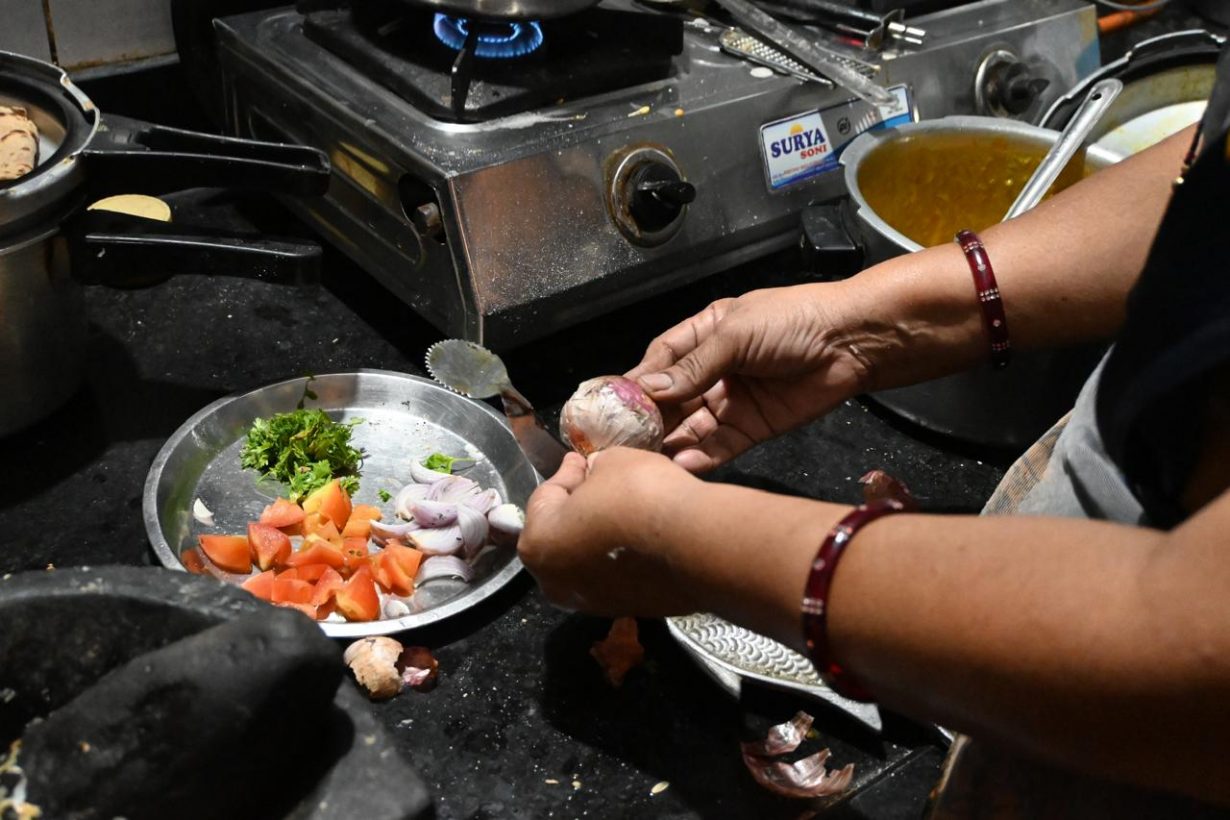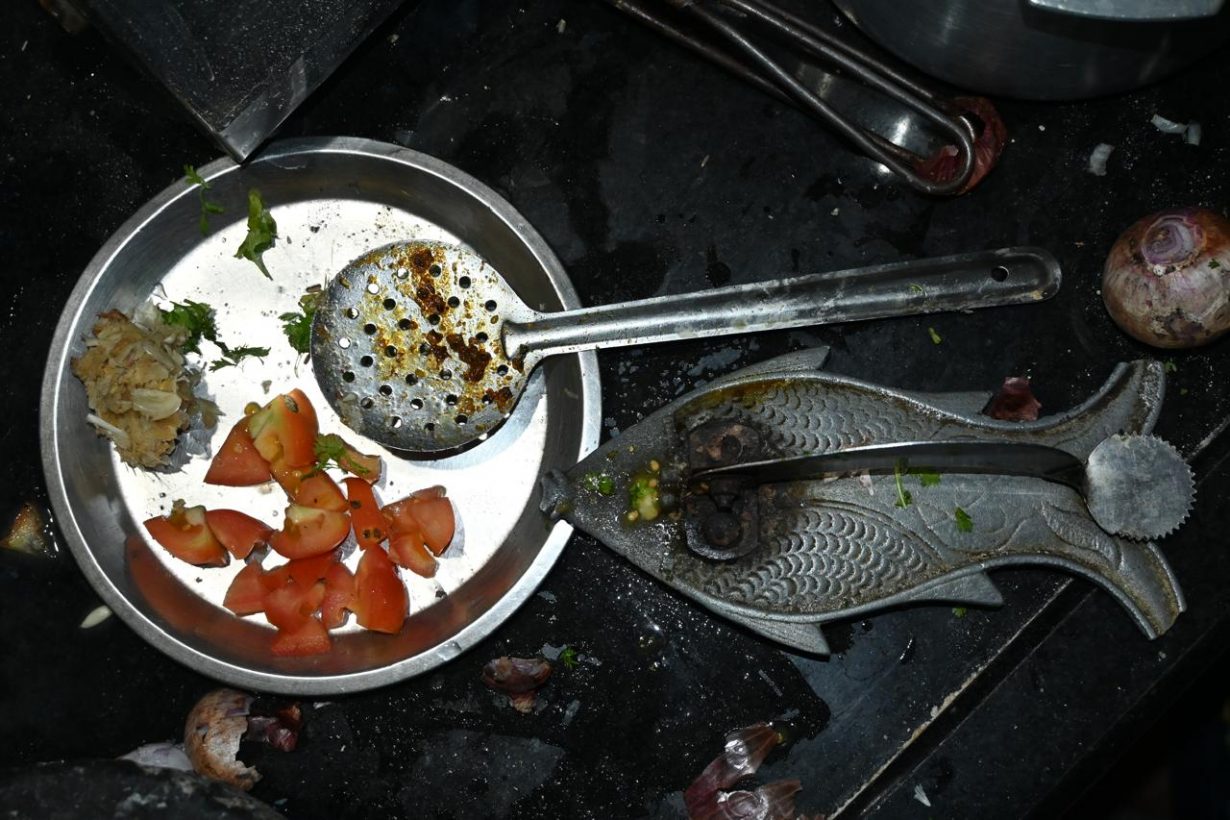Suraj Yengde recalls his childhood horror of mealtimes while growing up in a budget-conscious Dalit household, and how he now looks favourably on a diet that once appalled
When I went to the UK to study law, I was ill-prepared for the autonomy it demanded of me. I had never cooked before. Even though my father had encouraged me to assist my mother in the kitchen, she didn’t allow this. She was territorial. My mother hushed us if we were in the kitchen, the other part of our two-room house. That was the only space where no one interfered, and where she was allowed to be herself. Besides, if an additional person intervened, it added extra work. ‘Too many cooks spoil the food’ was the motto here. She had mastered techniques and was so aware of the kitchen dynamics that others would simply mess up the order of things. And if the food was spoiled, there was no quick remedy: the carefully budgeted and measured ingredients for that meal would already have been used up.
We seldom had grains, rice, dal, spices or oil beyond what was needed for the day. One of us siblings had to run to a grocer to fetch 100 grams of oil and other required condiments for under 10 rupees. Each meal was timed and rationed. If an unannounced guest paid a visit, then our mother would ask neighbours for additional food. Thus, even in the face of scarcity, our kitchen sizzled.
I can count on my fingers the few times when we had Amul-brand butter or ghee. The memory of eating this is still fresh in my mind. I can picture putting butter on some bread. Since we were used to frugality, the butter applied was the size of a pea. We did not know how to eat the shiny, slimy fat. Even now, many years and affordable luxuries later, I still cannot process the taste of butter or ghee.

My mother was a minimalist in the kitchen. The peanut or flaxseed chutney that she made did not have any oil. It was a dry mix with garlic, salt and chilli powder. The jowar roti (bhakari) she made was tasteless and difficult to swallow, as it was baked with flour, water and salt, and no additional flavour-adding ingredients. Chapati, a staple in my region, was a rarity at points in our lives. The masala that my mother created was not readymade but hand-ground. We did not have a blender. The iron pan that acted as a roti maker and sabji sauté was heated on the electric stove. We never had a gas stove; for the earlier part of my life, we had managed on a kerosene stove that had to be pumped until one’s hand grew tired.
The plates of food that resulted were carb-intensive and protein-supported (thanks to beef, mutton, chicken and eggs). We ate functionally: to get nutrition and energy for the day. And when we sat to eat, the rule was to eat until full. There was, after all, no set time for the next meal. Desserts were a treat that we could afford once a month or fortnightly, on my father’s payday.
This lifestyle continues till today. Now that I live in the us and work in academia, I have transitioned to a more sedentary lifestyle. With everyday access to excessively fatty, delicious food, I find myself going back to my mother’s recipes. Once I loathed them for their lack of taste and absence of fried oily things. Now, due to health reasons and for physical fitness, I cannot consume the glistening fatty food that once so appealed. When there is lavish cuisine served to me, on those occasions when I travel business-class or am invited to a Michelin-starred restaurant, I ask for a healthier option. I keep thinking about my mother’s kitchen.
I now recognise that Dalit cuisine is essentially a twenty-first-century diet. It is a stable and palatable approach to food. We eat as a culture of affection and sharing. Dalit food is a heavy diet that uses both vegetables and meat, and every part of each: even animal connective tissues are consumed in some parts of the country. The ingredients in the food are locally available and handpicked. Even in the face of modern lifestyles and urbanisation, food sourced from the villages is a delicacy to be shared with family and friends.

We watched TV shows that made us hungry and desperate to seek the food that they prepared. We could never afford paneer, mushroom or capsicum. Cream, coconut milk and other vegetarian dishes were incomprehensible. We couldn’t have them. Whatever the world thought about Indian food was what a dominant caste, elite class and urban gourmands advertised as ‘Indian food’ – a ‘brand’ that is now popular across the world. But this never reflected our India.
Show me any Indian restaurant outside India that serves beef or pork. Both items are consumed by Dalits but loathed by Hindus, Muslims and Sikh privileged castes. You may run into Khatri Punjabi cuisine, or South Indian Brahmin food. But Dalit food is absent from the dictionary of India’s vast gourmet culture. To confront this, writer Shahu Patole set out to inform the world about the Dalit kitchen. His book Dalit Kitchens of Marathwada (2024) brings Dalit culture and cuisine to your kitchen. It is written partly as a cookbook and partly as a cultural history.
Artist Rajyashri Goody has also made her art project Eat With Great Delight (2018) intersect with senses of taste and Dalit social history. The project combines family photographs documenting culinary social gatherings with recipes documenting Dalit cuisine. It is a lip-smacking corrective to the dominant-caste history of South Asian food. A start for those who would wish to present Indian food in its true variety and to give an insight into how the vast majority of Indians really eat. After all, food is a digestible relationship – softened by munching crisps and swallowing pride.
Suraj Yengde is a writer and academic based in Cambridge, MA
